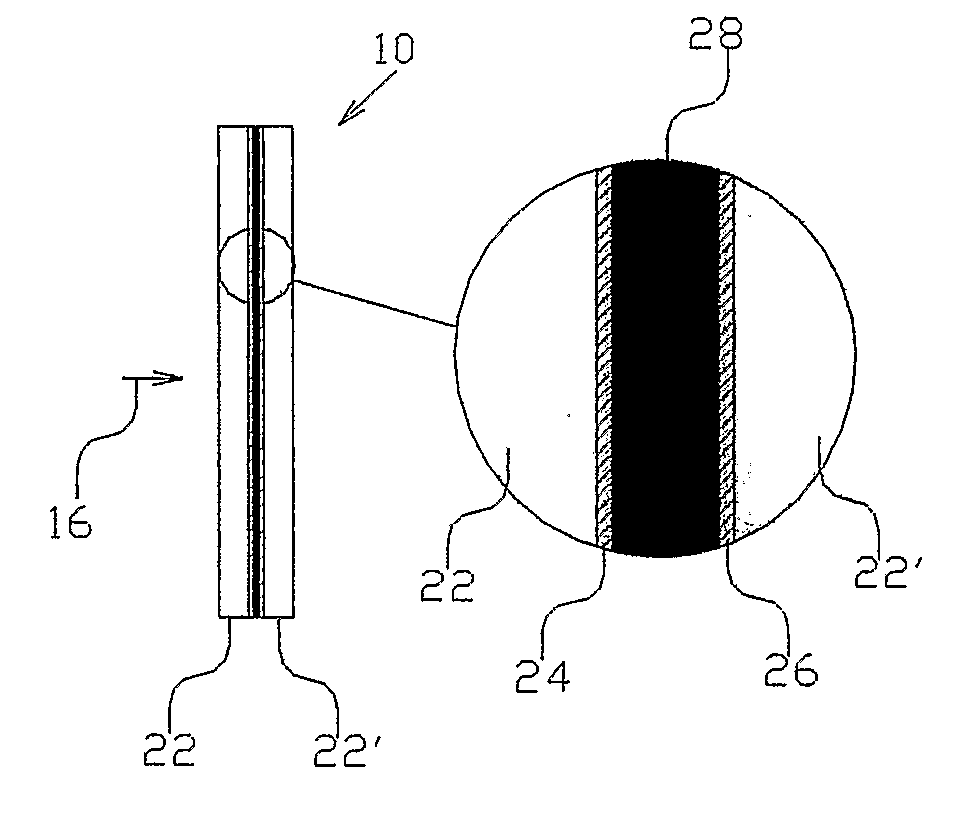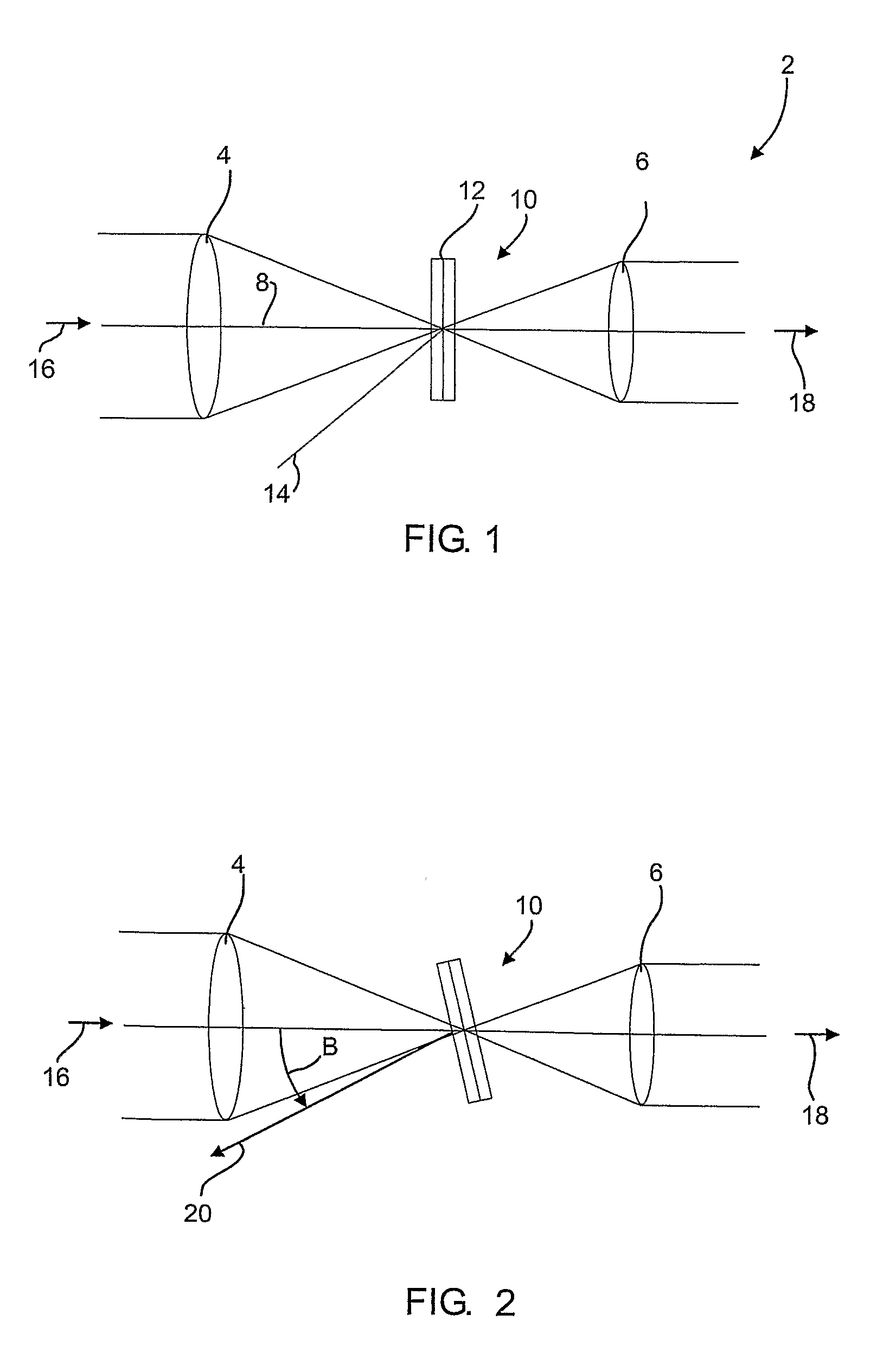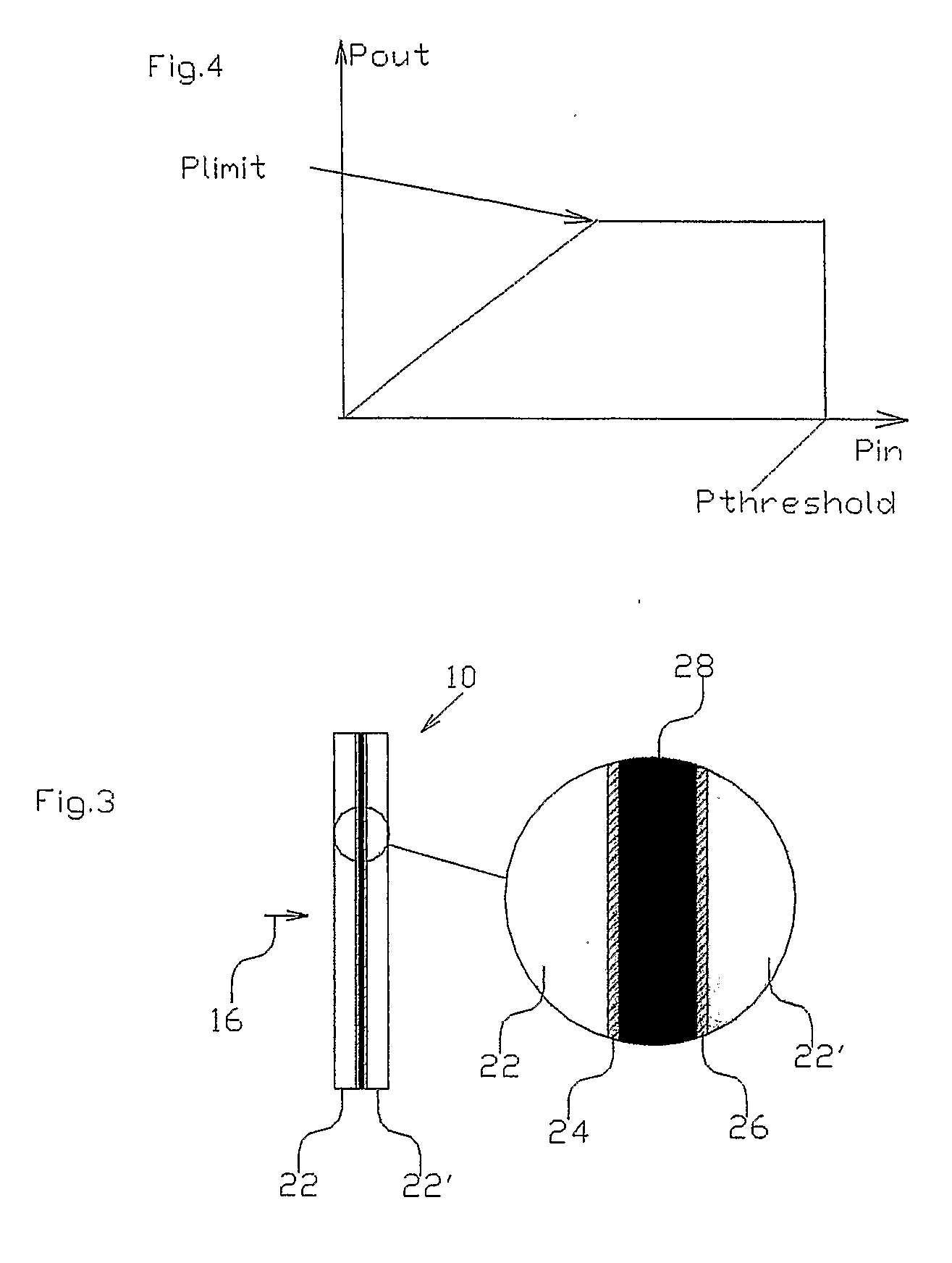Optical power limiting and switching combined device and a method for protecting imaging and non-imaging sensors
- Summary
- Abstract
- Description
- Claims
- Application Information
AI Technical Summary
Benefits of technology
Problems solved by technology
Method used
Image
Examples
Embodiment Construction
[0045]Referring now to FIG. 1, there is shown a schematic, cross-sectional view of an optical power-limiting and switching system 2 for imaging and non-imaging sensors, having a two-dimensional insert in its cross-over point. The two-dimensional optical power switching system 2 is shown utilized, e.g., with a telescope having an input lens 4 and an output lens 6, disposed along an optical path 8. An optical limiter and switch 10, responsive to optical power, is located on the optical path 8, in a plane 12 traversing the optical path. Plane 12 includes the focal or cross-over point 14, between an input power beam 16 and an output power beam 18, for causing the limiting or interruption of optical power propagation from the input power beam 16 to the output power beam 18 when the optical power exceeds a predetermined threshold.
[0046]FIG. 2 illustrates a method of reducing back-reflected light by tilting the limiter and switch 10 at an angle β / 2, where β is the angle between the input p...
PUM
 Login to View More
Login to View More Abstract
Description
Claims
Application Information
 Login to View More
Login to View More - R&D
- Intellectual Property
- Life Sciences
- Materials
- Tech Scout
- Unparalleled Data Quality
- Higher Quality Content
- 60% Fewer Hallucinations
Browse by: Latest US Patents, China's latest patents, Technical Efficacy Thesaurus, Application Domain, Technology Topic, Popular Technical Reports.
© 2025 PatSnap. All rights reserved.Legal|Privacy policy|Modern Slavery Act Transparency Statement|Sitemap|About US| Contact US: help@patsnap.com



